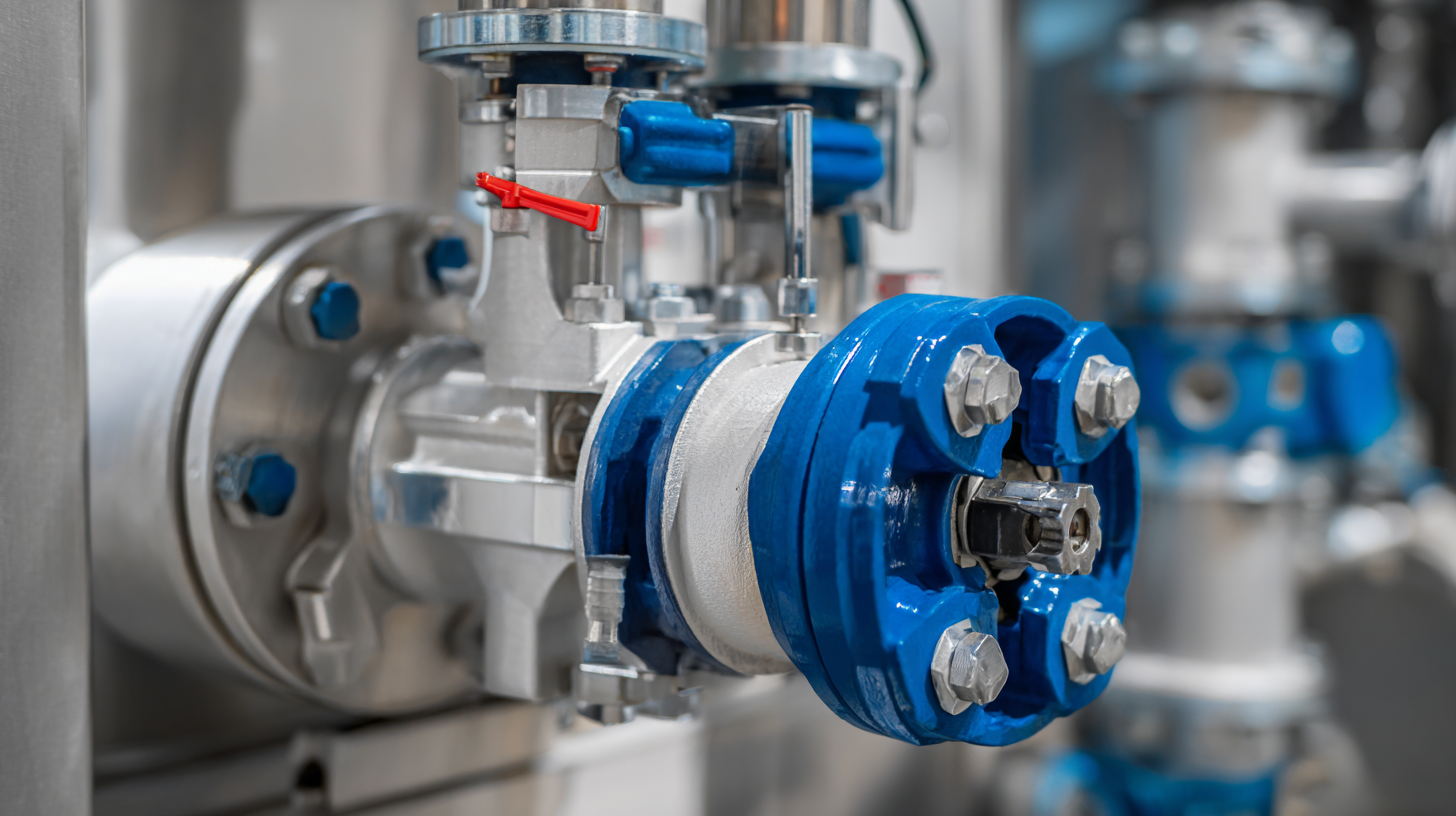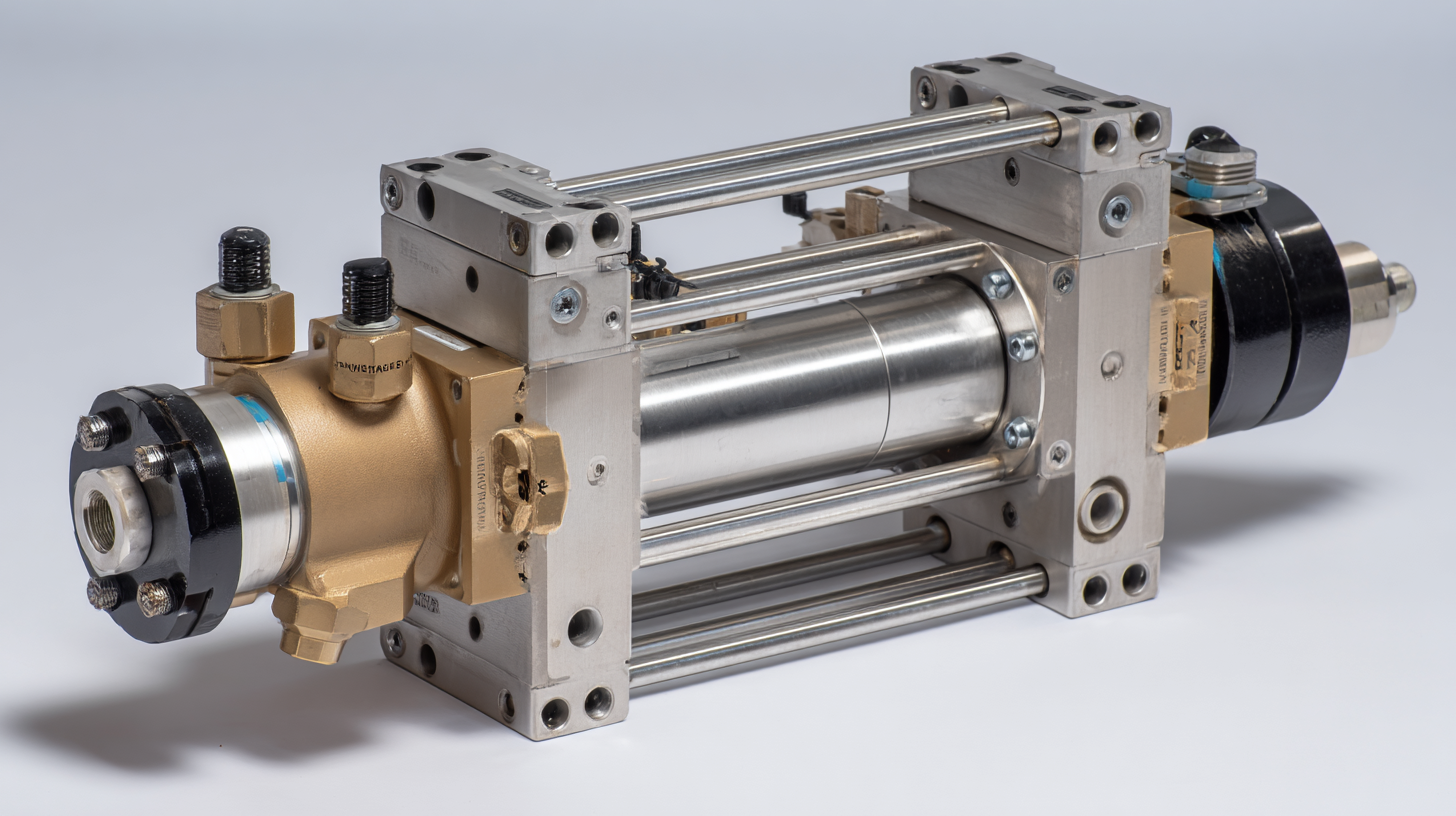7 Essential Tips for Choosing the Best Pneumatic Butterfly Valve
The selection of the right pneumatic butterfly valve can significantly impact operational efficiency and cost-effectiveness in various industrial applications. According to a recent report by MarketsandMarkets, the global butterfly valve market is projected to grow at a CAGR of 6.4% from 2021 to 2026, reaching an estimated value of over $5 billion. This growth is indicative of the increasing reliance on pneumatic butterfly valves in sectors such as oil and gas, water treatment, and power generation, where precise flow control and reliability are paramount. As industries continue to evolve, understanding the key factors in selecting the best pneumatic butterfly valve becomes essential for ensuring optimal performance and longevity.

In this blog, we present seven essential tips that will guide you in making informed decisions tailored to your specific operational needs.
Understanding the Basics of Pneumatic Butterfly Valves for 2025 Applications
When considering
pneumatic butterfly valves
for applications in 2025, it's essential to grasp the fundamental principles governing their operation. Pneumatic butterfly valves utilize compressed air to control the flow of fluids efficiently, making them ideal for various industries, including water treatment, food processing, and HVAC systems. Understanding the mechanism of these valves—where a disc rotates around a central axis to either permit or obstruct flow—can significantly impact
operational efficiency
and maintenance protocols.
 With the global air compressor market expected to grow significantly, reaching
$29.31 billion by 2032,
the importance of pneumatic systems cannot be overstated. As technological advancements continue to enhance pneumatic actuation, businesses must carefully choose the right butterfly valve to maximize automation and operational efficiency. Factors such as valve material, size, and compatibility with existing systems will play a key role in achieving sustainable development and
energy savings
in industrial applications. As 2025 approaches, staying updated on these essentials will ensure the adoption of the most effective and reliable pneumatic solutions.
With the global air compressor market expected to grow significantly, reaching
$29.31 billion by 2032,
the importance of pneumatic systems cannot be overstated. As technological advancements continue to enhance pneumatic actuation, businesses must carefully choose the right butterfly valve to maximize automation and operational efficiency. Factors such as valve material, size, and compatibility with existing systems will play a key role in achieving sustainable development and
energy savings
in industrial applications. As 2025 approaches, staying updated on these essentials will ensure the adoption of the most effective and reliable pneumatic solutions.
Key Features to Consider When Selecting the Ideal Pneumatic Butterfly Valve
When selecting the ideal pneumatic butterfly valve, it’s crucial to understand the key features that will assure optimal performance in your specific application. One essential aspect to consider is the valve material; industries frequently utilize materials such as stainless steel, which offers excellent corrosion resistance and longevity. According to a report by the International Journal of Engineering Research, stainless steel valves demonstrate a nearly 30% longer lifespan than their carbon steel counterparts under similar operating conditions.
Another critical feature is the valve size and pressure rating. It's advisable to assess your system's requirements and choose a valve that can handle the necessary flow rates and pressure levels. A study by the Flow Control Society indicated that improper sizing can lead to a 50% increase in energy consumption, significantly impacting operational costs.
Lastly, consider the valve's actuator type, as this will influence the speed and effectiveness of the valve operation. Pneumatic actuators are popular due to their responsiveness and reliability. In fact, the Pneumatic Valve Manufacturers Association reports that pneumatic actuators can provide a quick response time, which is essential for processes requiring precise flow control. Prioritizing these features will help ensure you select a pneumatic butterfly valve that meets your needs effectively.
The Role of Automation in Pneumatic Butterfly Valve Selection
The integration of automation in the selection process of pneumatic butterfly valves is becoming increasingly pivotal in industrial applications. Automation not only streamlines operations but also enhances precision in valve performance. According to a recent report by MarketsandMarkets, the global market for industrial automation is projected to reach $296.7 billion by 2027, showcasing a clear trend toward automation solutions in enhancing operational efficiency. This automation is particularly crucial when selecting pneumatic butterfly valves, as the right choice can significantly impact process control and energy efficiency.
In the context of selecting pneumatic butterfly valves, automation aids in the assessment of variables such as flow rate, pressure, and temperature. Automated systems can analyze these parameters in real time, ensuring the valve selected meets the operational requirements with optimal performance. A study by Research and Markets highlights that automated valve actuation can reduce energy consumption by up to 30%, showcasing the financial and operational benefits of leveraging automation in valve selection. Therefore, manufacturers are advised to incorporate automated selection tools to facilitate more informed decisions, ultimately leading to enhanced productivity and reduced operational costs in diverse industrial sectors.
7 Essential Tips for Choosing the Best Pneumatic Butterfly Valve - The Role of Automation in Pneumatic Butterfly Valve Selection
| Tip Number |
Tip Description |
Importance Level |
Automation Role |
| 1 |
Assess required flow rates and pressure conditions. |
High |
Automation helps monitor real-time flow conditions. |
| 2 |
Choose the right materials compatible with your application. |
Medium |
Automated inventory systems can track material availability. |
| 3 |
Check the valve's actuator type and compatibility. |
High |
Automation ensures synchronized operations with actuators. |
| 4 |
Evaluate the expected cycle frequency and service life. |
High |
Automated sensors can predict maintenance needs. |
| 5 |
Consider the installation environment and space constraints. |
Medium |
Automation assists in planning optimal valve placement. |
| 6 |
Review the valve's certification and standards compliance. |
High |
Automated compliance check systems streamline this process. |
| 7 |
Seek expert advice and manufacturer support for selection. |
Medium |
Automation tools can connect users with support resources. |
Emerging Technologies Impacting Pneumatic Butterfly Valve Design
Emerging technologies are significantly reshaping the design and functionality of pneumatic butterfly valves, leading to enhanced efficiency and reliability in various applications. According to a 2023 market research report by Grand View Research, the global market for butterfly valves is expected to reach USD 6.0 billion by 2030, driven primarily by advancements in smart manufacturing technologies. These technologies allow for more precise control and automated operation, which improve overall system performance and reduce wastage.
Recent innovations include the integration of IoT (Internet of Things) capabilities into pneumatic butterfly valves, enabling real-time monitoring and data analysis. This shift not only streamlines maintenance practices but also enhances predictive maintenance capabilities, reducing downtime and operational costs. For instance, a study by MarketsandMarkets indicates that the adoption of IoT in industrial automation is projected to grow at a CAGR of 24.5% from 2020 to 2025, highlighting a significant trend that valve manufacturers are embracing to stay competitive. As these technologies continue to evolve, they are set to play a crucial role in improving valve designs, making them smarter, more efficient, and tailored to meet the specific needs of modern industries.
7 Essential Tips for Choosing the Best Pneumatic Butterfly Valve
This bar chart represents the various factors to consider when selecting a pneumatic butterfly valve based on their importance rating. The ratings are derived from industry surveys reflecting key design features that impact performance and selection.
Future Challenges and Solutions in Pneumatic Butterfly Valve Selection and Usage
As industries evolve, the demand for high-performance pneumatic butterfly valves grows, facing challenges such as the need for enhanced sealing, automation compatibility, and regulatory compliance. According to a recent report by MarketsandMarkets, the global butterfly valve market is projected to reach $6.2 billion by 2026, with a significant shift towards pneumatic options due to their efficiency in regulating flow and pressure in various applications. However, selecting the right pneumatic butterfly valve requires careful consideration of several key factors to meet these emerging demands.

Tip 1: When selecting a pneumatic butterfly valve, prioritize valves with superior sealing capabilities to reduce the risk of leaks, which can lead to costly downtime and increased environmental impact.
Additionally, manufacturers must focus on compatibility with modern automation systems. A survey by Valves & Actuators indicates that 68% of industry professionals are prioritizing smart valve technologies to improve process control and monitor performance in real-time. Implementing advanced communication protocols can drastically enhance operational efficiency and facilitate predictive maintenance.
Tip 2: Ensure your pneumatic butterfly valve choice supports reliable automation interfaces such as AS-i, DeviceNet, or Profibus, which allow for seamless integration into existing systems.
By staying informed about industry trends and technologies, manufacturers can effectively navigate the challenges of selecting the best pneumatic butterfly valve, optimizing both performance and sustainability.
 © Copyright 2020 Tianjin Tanghaidongyang Valve Co., Ltd. All Rights Reserved.
© Copyright 2020 Tianjin Tanghaidongyang Valve Co., Ltd. All Rights Reserved.

 With the global air compressor market expected to grow significantly, reaching
With the global air compressor market expected to grow significantly, reaching


